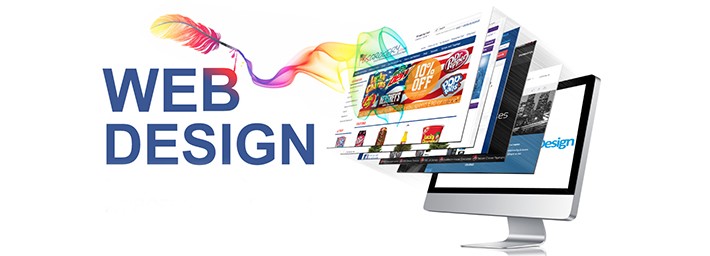From MIG to TIG Understanding the Right Welding Equipment for You
Discover essential welding equipment for every welder, from machines to protective gear, ensuring precision, safety, and quality in every project.

Welding is an essential skill used in a wide range of industries, from construction and automotive repair to manufacturing and aerospace. It involves joining materials, usually metals, using heat and pressure to create a strong bond. To perform this task safely and effectively, a variety of specialized welding equipment is required. Whether you're a beginner or an experienced welder, understanding the equipment involved is crucial for getting the best results.
In this blog, we’ll dive into the different types of welding equipment, their uses, and tips for choosing the right tools for your welding projects. Whether you’re working with steel, aluminum, or other materials, having the proper equipment ensures precision, safety, and efficiency.
Understanding Welding: The Basics
Before we discuss the equipment, let’s quickly review the basics of welding. The process typically involves melting the base materials and adding a filler material to create a bond. There are various types of welding, with the most common being:
-
MIG Welding (Metal Inert Gas): This is a popular form of welding that uses a continuous wire feed and an inert gas to shield the weld from contaminants.
-
TIG Welding (Tungsten Inert Gas): This method uses a non-consumable tungsten electrode to create the weld and requires more precision and skill.
-
Stick Welding (Shielded Metal Arc Welding): This type of welding uses a flux-coated electrode to create the weld and is typically used for outdoor and heavy-duty welding jobs.
-
Flux-Cored Arc Welding (FCAW): Similar to MIG welding, but uses a flux-cored wire that eliminates the need for a shielding gas.
Each welding process requires specific equipment and tools to achieve the best results.
Essential Welding Equipment
Welding equipment is designed to handle high temperatures, heavy-duty tasks, and specialized techniques. Below is a list of the essential tools and machines you'll need to perform different types of welding.
1. Welding Machine/Power Source
The welding machine is the most critical piece of equipment in the welding process. It provides the necessary electrical power to create an arc and melt the base metal. The type of welding machine you need depends on the welding process you're using:
-
MIG Welder: A MIG welder uses a continuous wire feed to deliver the filler metal while shielding gas protects the weld. These machines are easy to use and suitable for beginners.
-
TIG Welder: A TIG welder requires more precision and skill, as you’ll be manually feeding the filler material into the weld pool. TIG welders typically provide clean, high-quality welds.
-
Stick Welder: A stick welder, or SMAW (Shielded Metal Arc Welder), uses electrodes coated in flux to create the weld. This type of machine is rugged and ideal for outdoor work.
-
Multi-Process Welders: These versatile machines can perform multiple types of welding, including MIG, TIG, and Stick welding, offering flexibility for various projects.
2. Welding Helmet
A welding helmet is essential for protecting your face and eyes from the intense light, heat, and ultraviolet rays produced during welding. There are two main types of welding helmets:
-
Auto-Darkening Helmets: These helmets feature a lens that automatically darkens when the welding arc is struck, providing enhanced safety and convenience.
-
Traditional Helmets: These helmets have fixed dark lenses and require you to manually lift the helmet for non-welding tasks.
An auto-darkening helmet is often recommended for those who need quick adjustments and maximum protection.
3. Welding Gloves
Welding gloves are designed to protect your hands from the high temperatures and sparks generated during the welding process. Look for gloves that are made from heat-resistant materials, such as leather, and provide a comfortable, secure fit. There are specialized gloves for different types of welding, including TIG gloves for precision and MIG gloves for heavy-duty work.
4. Welding Jacket/Clothing
A welding jacket or fire-resistant clothing is critical for protecting your skin from burns caused by sparks, molten metal, and UV radiation. Jackets are often made from leather, cotton, or a flame-resistant synthetic fabric that provides both protection and comfort.
Additionally, make sure to wear long pants and steel-toed boots for full-body protection. Safety goggles or face shields should also be worn when grinding or cutting.
5. Welding Rods and Filler Materials
Depending on the type of welding you’re doing, you’ll need specific welding rods or filler materials to create the weld. These are used to fill the joint between the two metals you’re welding. The most common types include:
-
MIG Wire: A continuous wire used in MIG welding.
-
TIG Filler Rods: Thin rods of metal used in TIG welding.
-
Stick Electrodes: Coated rods used in Stick welding.
It’s important to choose the correct filler material based on the material you’re welding and the welding process you're using.
6. Welding Clamps and Magnets
Welding clamps are used to hold your workpieces together while you weld. They prevent movement and help you maintain alignment. There are many types of clamps, such as C-clamps and spring clamps, each suited to different tasks.
Welding magnets help hold pieces of metal at specific angles while you weld. These magnets are particularly useful in pipe welding and for holding metal frames in place during fabrication.
7. Welding Cart
A welding cart provides a convenient, mobile platform for your welding machine, gas tanks, and tools. It helps keep your workspace organized, and it’s especially important for professionals who need to move equipment around a job site. A well-designed cart makes transporting your welding gear much easier and safer.
8. Welding Wire and Shielding Gas
For processes like MIG welding and Flux-Cored welding, shielding gas is essential. The gas protects the weld pool from atmospheric contamination. Common gases include argon, helium, and carbon dioxide (CO2).
Additionally, MIG welders use welding wire, which is the filler material fed through the machine. You’ll need to choose the right type of wire based on the metals you’re welding, whether it’s mild steel, stainless steel, or aluminum.
Choosing the Right Welding Equipment
When selecting welding equipment, consider the following factors:
-
Type of Work: Are you working on light-duty tasks like hobby welding, or are you handling industrial-grade projects? This will determine the type of machine and accessories you need.
-
Material: Different metals (e.g., steel, aluminum) require specific types of welding machines and filler materials.
-
Experience Level: Beginners may find MIG welders easier to operate, while advanced welders may prefer TIG or Stick welding for their precision and versatility.
-
Portability: If you need to work on multiple job sites, portability is key. Look for lightweight and mobile equipment.
-
Budget: Quality welding equipment can be expensive, but investing in reliable tools will pay off in the long run. Consider your needs and how often you'll be using the equipment.
Safety Precautions
Welding is a high-risk activity, and safety should always be your top priority. Along with the protective gear mentioned earlier, here are a few key safety tips:
-
Always work in a well-ventilated area to avoid inhaling harmful fumes.
-
Keep flammable materials away from your workspace.
-
Never leave a welding machine unattended while it’s in use.
-
Regularly inspect your equipment for signs of wear and damage.
Conclusion
Welding is both an art and a science, and using the right equipment is critical to producing high-quality, safe welds. Whether you’re a professional welder or a hobbyist, the right gear will not only improve your results but also ensure your safety. From welding machines and filler materials to protective gear like helmets and gloves, understanding the equipment you need is essential for success.
What's Your Reaction?



















